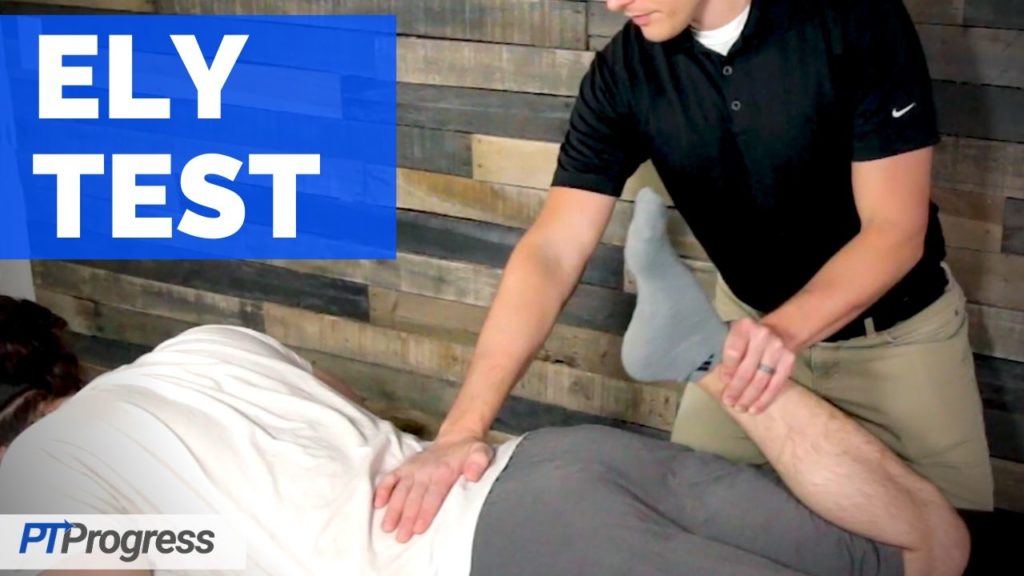
Purpose: The Ely test is used to assess for tightness in the rectus femoris muscle.
How to Perform Ely Test
Position of Patient: To perform the Ely test, the patient should be positioned in prone with the examiner on the side to be tested.
Performance: The examiner places one hand on the pelvis to stabilize and monitor for movement. With the opposite hand, passively flex the patient’s knee attempting to bring the heel to reach the patient’s buttocks.
How to Interpret Ely’s Test
Positive Finding: The test is considered positive if the patient’s heel does not fully reach the buttocks, indicating stiffness of the rectus femoris muscle. It is also considered positive if the patient complains of pain in the hip or if they lift their hip during the test because of discomfort.
Test Accuracy / Reliability / Evidence:
Sensitivity of the Ely test ranges from 56 to 59% and the specificity ranges from 64 to 85% according to Marks et al (see below)
Source: Marks M C, et al (2003) Clinical utility of the Duncan-Ely test for rectus femoris dysfunction during the swing phase of gait. Developmental Medicine & Child Neurology 2003, 45: 763–768

